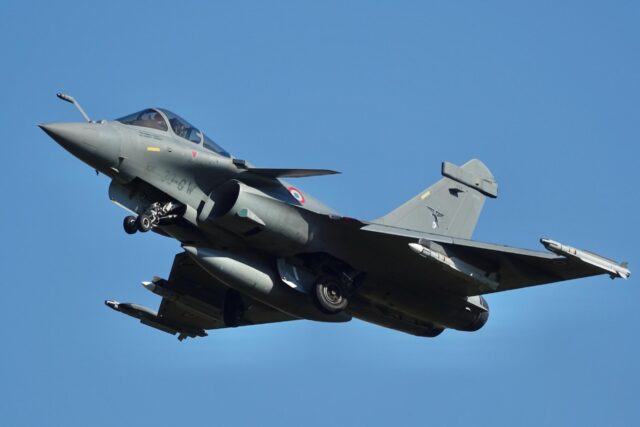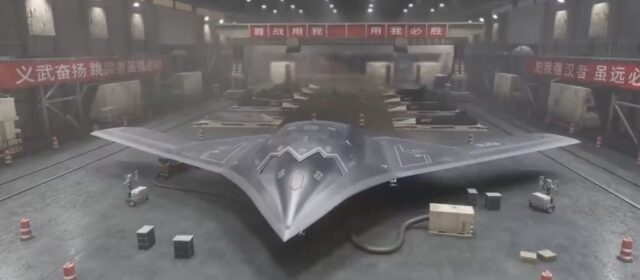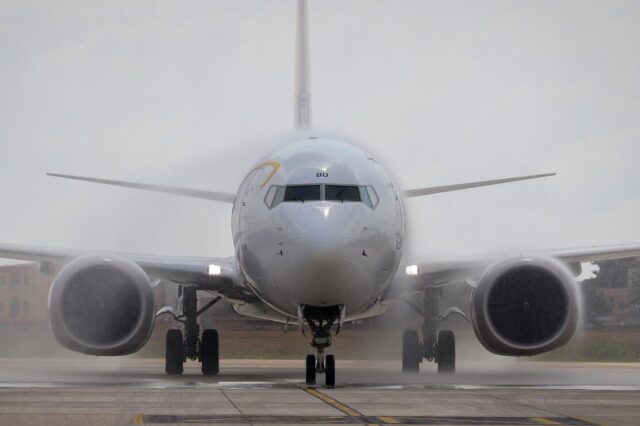Waiting for the F-35: Czech Air Force trims Saab Gripen fleet but extends service life to 2035

September 2, 2025

The Czech Air Force will continue flying Saab’s JAS 39 Gripen fighters until 2035 as Prague finally reaches a deal with Sweden to extend the lease on the aircraft.
In service since 2005, the Saab Gripen will now provide a seamless bridge to the arrival of the 5th-generation F-35, scheduled to arrive from 2031.
This continuity has been secured under a new lease agreement with Sweden, signed in Prague by Lubor Koudelka, Director General of the Ministry of Defence’s Armaments and Acquisitions Section, and in Stockholm by Mikael Granholm, Director General of the Swedish Defence Materiel Administration (FMV).
The current lease was due to expire in 2027, and negotiations have been ongoing for over a year on the terms of the extension.
Gripen lease terms and upgrades
Under the deal, the Czech Republic will pay 6.012 billion Swedish kronor ($639 million) (16.695 billion Czech crowns including VAT at the June 2025 exchange rate) for the lease, maintenance, and pilot training.

Defence officials underscored that the package is about 25% more favourable than Sweden’s original proposal tabled in 2024. Earlier this year, it was uncertain whether the Czech defence budget could stretch to an extension of the Gripen lease at all.
“The agreement is good news for the Czech Republic and for the safeguarding of our defence capabilities,” Koudelka said in June, noting that protracted negotiations had delivered far more advantageous terms than expected.
The contract also covers a 1.454 billion kronor ($155 million) modernisation programme, building on earlier upgrades introduced since 2015 to ensure the Gripens remain combat-relevant until retirement.
Czech Air Force will maintain 12 Gripens from a fleet of 12
As part of the arrangement, the fleet will be trimmed from 14 to 12 aircraft—10 single-seat and two twin-seat models. Senior officers stressed that this reduction will not compromise airspace protection or NATO commitments.
“Even with fewer aircraft, the protection of Czech airspace will be ensured. We will also guarantee smooth pilot training and transition to the new F-35 platform,” said Major General Petr Čepelka, Commander of the Czech Air Force.
NATO has been informed of the change and will take the smaller fleet into account in collective air defence planning. Officials acknowledged that maintenance costs will rise as the aircraft age, but emphasised that the negotiated terms mirror agreements with the Swedish Air Force and other Gripen operators.
From MiG-21s to NATO frontline
The Gripen has been central to Czech air defence since 2005, when the first jets landed at Čáslav Air Base to replace ageing MiG-21s. With NATO membership secured in 1999, the Czech Republic needed modern supersonic fighters, and Sweden’s lease offer provided a rapid and affordable solution.
Signed in 2004, the lease led to one of the fastest fighter transitions in Europe: by April 2005, Gripens were already on Quick Reaction Alert, taking over air policing duties from the MiG-21s. The jets represented a step change in capability, equipped with advanced avionics, sensors, and weapon systems that gave Czech pilots far greater autonomy and flexibility.

Michal Daněk, a former Gripen pilot with more than 2,200 flight hours, recalls: “In the beginning, our squadron could only cover air policing tasks. But as we gained more experience, we expanded our role. We quickly became one of NATO’s top air combat units.”
Steady capability growth
Over the years, the Gripens have been steadily modernised. The addition of AIM-120C-5 AMRAAM missiles in 2008 boosted their air-to-air punch, while air-to-air refuelling, introduced in 2012, enabled participation in NATO’s Baltic and Icelandic air policing rotations.

From 2016, the MS20 software package added the PS-05/A Mk3 radar and the Link 16 tactical data link, improving situational awareness and interoperability. In 2018, the Litening 4i targeting pod gave the aircraft enhanced ground-attack precision. Together, these upgrades transformed the Gripen into a versatile multi-role platform.
Since entering service, Czech Gripens have flown more than 38,000 hours, deployed repeatedly to NATO missions, and proved themselves as reliable and adaptable assets.
Bridge to the F-35
While the Gripen has served with distinction, defence planners concluded that only a fifth-generation fighter could meet the Czech Republic’s long-term needs. Following expert recommendations and NATO assessments, Prague committed in 2023 to buying 24 F-35A Lightning II jets – one of the largest defence procurements in the country’s history. Deliveries will begin in 2031, with full operational capability expected by 2035.
Until then, the Gripen will remain the mainstay of Czech air defence, a proven fighter whose adaptability, reliability, and modernisation potential have carried it from its Cold War replacement role into the heart of NATO operations.
For the Czech Air Force, the Gripen’s story is both a legacy and a bridge: a two-decade record of protecting national skies, and a crucial platform to keep them secure until the F-35 takes over.
















